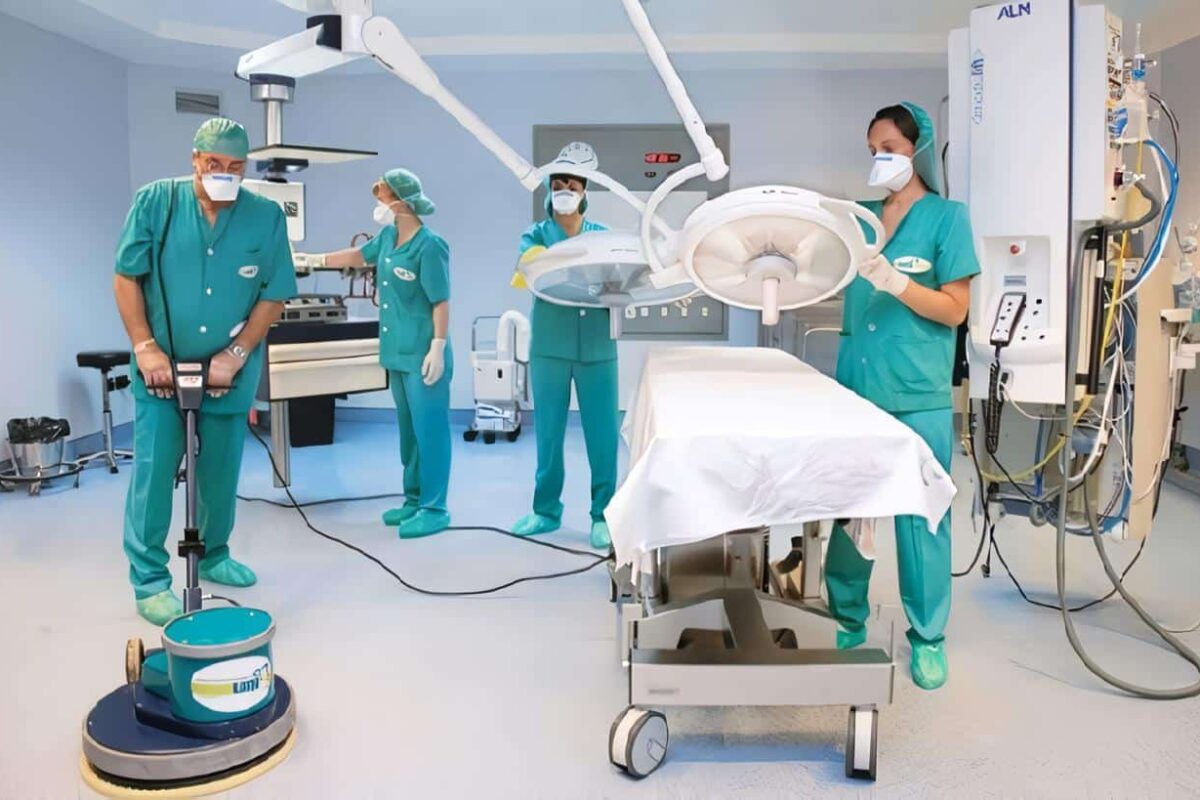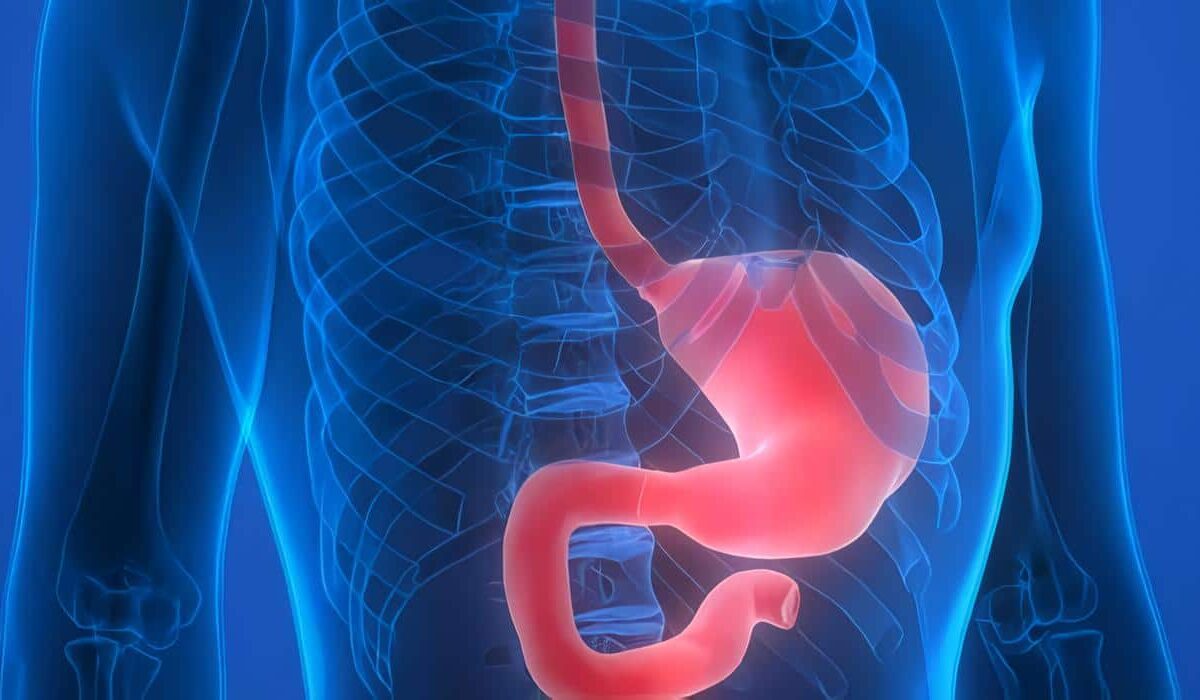Use of Hand-held Ultrasound to Perform E-FAST by General Surgery Residents in a Trauma Reference Center: First Experience in the Colombian Caribbean Region
Uso de Ecografía Portátil para realizar E-FAST por Residentes de Cirugía General en un Centro de Referencia en Trauma: Primera Experiencia en la Región del Caribe Colombiano
Abstract
Introduction. Extended focused assessment with sonography for trauma (E-FAST) can be performed with minimal training and achieve ideal results. It allows easy transport and use in austere environments such as the Colombian Caribbean, where many centers do not have 24-hour radiology services.
The objective of this study was to determine the performance of the use of E-FAST in the evaluation of trauma by second-year general surgery residents in the emergency department.
Methods. Retrospective observational study that evaluated the diagnostic performance of E-FAST with Butterfly IQ, in patients with thoracoabdominal trauma, who attended a referral center in the Colombian Caribbean between November 2021 and July 2022. Sensitivity, specificity, and positive and negative predictive values were evaluated, compared with intraoperative findings or conventional imaging.
Results. A total of 46 patients were included, with a mean age of 31.2 ± 13.8 years, 87.4% (n=39) were male. The main mechanism of trauma was penetrating (n=32; 69.5%). It was found that 80.4% (n=37) of the patients had a positive E-FAST result, and of these, 97% (n=35) had a positive intraoperative finding.
Sensitivity, specificity, positive predictive value and negative predictive value were 92.1%, 75%, 94.6%, and 66.6%, respectively. The positive likelihood ratio was 3.68, while the negative likelihood ratio was 0.10.
Conclusion. General surgery residents have the competence to perform accurate E-FAST scans. The hand-held ultrasound device is an effective diagnostic tool for trauma and acute care surgery patients.
Keywords: ultrasonography; handheld computers; wounds and injuries; emergency medicine; hospital economics; graduate medical education. Resumen
Introducción. La evaluación enfocada extendida con ecografía en trauma (E-FAST, extended focused assessment with sonography for trauma) puede realizarse con entrenamiento mínimo y lograr resultados ideales. Su fácil transporte permite usarla en entornos austeros, como el Caribe colombiano, donde muchos centros no disponen de servicio radiológico las 24 horas.
El objetivo de este estudio fue determinar el rendimiento del uso de E-FAST por residentes de cirugía general de segundo año en la evaluación del paciente con trauma en urgencias.
Métodos. Estudio observacional retrospectivo que evaluó el rendimiento diagnóstico de E-FAST con Butterfly IQ, en pacientes con trauma toracoabdominal que acudieron a un centro de referencia del Caribe colombiano, entre noviembre de 2021 y julio de 2022.
Se evaluaron sensibilidad, especificidad, valores predictivos positivo y negativo, comparando la descripción de la ecografía con los hallazgos intraoperatorios o imagenología convencional.
Resultados. Se incluyeron un total de 46 pacientes, con una media de edad de 31,2 ± 13,8 años, siendo el 87,4 % (n=39) hombres. El principal mecanismo de trauma fue penetrante (n=32; 69,5 %).
Se encontró que el 80,4 % (n=37) de los pacientes tuvo resultado E-FAST positivo, y que, de estos, el 97 % (n=35) tuvo un hallazgo positivo intraoperatorio. Se calculó una sensibilidad de 92,1 %, especificidad de 75 %, valor predictivo positivo de 94,6 % y negativo de 66,6 %; la razón de verosimilitud positiva fue de 3,68 y la negativa de 0,10.
Conclusión. Los residentes de cirugía general están capacitados para realizar exploraciones E-FAST precisas. El ecógrafo portátil es una herramienta de diagnóstico eficaz para pacientes traumatizados.
Palabras clave: ultrasonografía; computadoras de mano; heridas y traumatismos; medicina de emergencia; economía hospitalaria; educación de postgrado en medicina.
Introduction – Uso de Ecografía Portátil para realizar E-FAST por Residentes de Cirugía General
Ultrasound is routinely used in the initial evaluation of trauma patients in the emergency department (ED), since early detection of life- threatening injuries is the most important factor in reducing mortality 1 Rozicky et al. 2 first described the use of ultrasound in the evaluation of trauma patients as extended focused assessment with sonography for trauma (E-FAST).
In the context of trauma, the E-FAST protocol is used to identify free fluid and determine which patients should immediately undergo surgery.
This is a non-invasive, operator-dependent, cost-effective and affordable procedure 3, which can be used by residents and specialists for the primary or secondary survey of trauma, in the absence of the availability of conventional imaging tools.
Point-of-care ultrasound (POCUS) and surgeon- performed ultrasound both build on the portability of the new ultrasound instruments to perform scans without involving patient transfers, delays in emergency department care or where necessary.
Recently, revolutionary technologies such as portable POCUS probes 4, for example, the Butterfly IQ+ (Butterfly Network Technologies, Guilford, CT, USA), have generated great expectation.
Main features consist of its portability, user-friendly interface and ease of configuration on everyday devices such as a cell phone or tablet, in addition to its relatively low cost compared to other devices with similar characteristics, without sacrificing fundamental properties such as image quality and maneuverability, making it an essential tool 5.
Evidence in traumatology has shown that non-radiologist emergency physicians can perform E-FAST, with great precision, through specialized training 6.
In regions with limited resources and barriers in the availability of specialized services 24 hours a day, such as the Colombian Caribbean region 7, alternatives should be sought to preserve efficiency in emergency care 8.
Currently, in this region, the performance of the use of E-FAST in the approach to trauma by general surgery residents in the emergency department, who during their training period attend the highest volume of trauma cases with risk or need for surgical care, has never been evaluated.
Based on the above, the objective of this study was to determine the performance of the use of E-FAST in the assessment of trauma by second-year general surgery residents in a trauma referral center in the Colombian Caribbean region.
Methods – Uso de Ecografía Portátil para realizar E-FAST por Residentes de Cirugía General
Retrospective observational study, which evaluated the diagnostic performance of E-FAST with Butterfly IQ+, in patients with thoracoabdominal trauma, who attended a reference center in the Colombian Caribbean, in the city of Barranquilla, between November 2021 and July 2022.
This is a referral trauma center in the northern region of Colombia, which concentrates many injured patients.
As inclusion criteria, it was defined that all patients over 18 years of age who were admitted to the emergency department presenting abdominal or thoracic injuries due to penetrating or blunt trauma, and who eventually underwent E-FAST with the Butterfly IQ+ ultrasound device, performed by 2 second-year general surgery residents with basic training in POCUS in the emergency department, were included.
Pregnant women and patients with incomplete data in their clinical history were excluded.
Data were extracted from electronic medical records (EMR) and ultrasound (US) images stored in the individual Butterfly Network Cloud database.
Sociodemographic data (age and sex), mechanism of trauma, E-FAST results, conventional imaging outcome, intraoperative findings, and final patient status were collected.
For portable ultrasound, a Butterfly IQ+ single probe whole body ultrasound system connected to an Apple iPhone 13 Pro Max (2021) or Apple iPad Mini (2021) via Lightning or USB-C cable, respectively, was used with the “Butterfly IQ” app.
Patient data were recorded in the app and the preset “FAST protocol” was used in which each window to be evaluated was sequentially selected: subxiphoid pericardium, Morrison’s pouch, splenorenal recess, suprapubic window, and pulmonary window.
The general surgery resident in charge performed the standard FAST evaluation between 1 and 5 minutes for each patient.
A true negative E-FAST was defined as an ultrasound with absence of free fluid and clinical surveillance or normal imaging performed by a radiologist using a console ultrasound machine.
In contrast, a true positive E-FAST was defined as the sonographic identification of free fluid associated with positive findings on surgical examination, regardless of the location or volume of free fluid.
A false negative E-FAST test was defined as the absence of free fluid on E-FAST, but with positive clinical or radiological findings suggestive of hemoperitoneum, hemopericardium, hemothorax or pneumothorax.
A false positive E-FAST was defined as images suggestive of free fluid in the pleural, peritoneal or pericardial space in the absence of intraoperative findings.
Initially, the data were recorded in an Excel spreadsheet and then exported to SPSS software version 28.0, where the statistical analysis was performed. The normality of the quantitative variables was evaluated using the Shapiro-Wilk test.
Data were presented as mean ± standard deviation (SD) for continuous variables. Qualitative variables were summarized as frequencies and percentages.
Sensitivity, specificity, positive predictive value (PPV), negative predictive value (NPV), positive test likelihood ratio (PLR), and negative test likelihood ratio (NLR) were calculated using the OpenEpi version 3.01 tool 9.
This study was approved by the institutional Ethics Committee and was conducted in accordance with the principles established in the Declaration of Helsinki.
Results – Uso de Ecografía Portátil para realizar E-FAST por Residentes de Cirugía General
A total of 46 patients were included, with a mean age of 31.2 ± 13.8 years, 87.4% (n=39) were male.
The main mechanism of trauma was penetrating (n=32; 69.5%), 93.4% (n=43) were taken to the operating room, mainly performing emergency laparotomy (n=24; 52.1%); 37 (80.4%) patients had positive E-FAST (Figure 1), 97% (n=35) were found to be true positive, based on intraoperative findings (only two were false positive). Of the nine (19.5%) patients with negative E-FAST, five underwent surgery, with three having positive findings of free cavity fluid (false negative) (Table 1).

Figure 1. Findings with the use of E-FAST protocol using the portable ultrasound machine (Butterfly iQ+, Butterfly Network Technologies, USA). a. M-mode barcode sign, linear lung scan; b. Subxiphoid ultrasound showing four-chamber cardiac window; c. Morrison’s pouch ultrasound with positive identification of free fluid; d. Transverse suprapubic ultrasound showing four-chamber cardiac window. Subxiphoid ultrasound showing the four-chamber cardiac window.
Table 1. Clinical and sociodemographic characteristics of the study population (n=46).

In comparison to the imaging and intraoperative findings, the sensitivity, specificity, PPV, NPV were found to be 92.1%, 75%, 94.6% and 66.6%, respectively. The PVR was 3.68, while the NPV was 0.10. The accuracy was found to be 89%.
Discussion – Uso de Ecografía Portátil para realizar E-FAST por Residentes de Cirugía General
In scenarios with limited resources, the use of innovative diagnostic tools such as POCUS by the health team in training is somewhat controversial, due to the diagnostic performance and cost-utility and cost-effectiveness indicators, especially in the emergency setting 10–12.
However, in the reality of some low- and middle-income countries, where it is precisely this team in training that is responsible for the immediate care and response of these services.
Solutions should be evaluated and proposed to improve the performance of medical care with the least possible use of resources.
Trauma patients are a challenge for emergency physicians, especially those presenting with blunt trauma. Late diagnosis reduces good outcomes, survival rates and increases complications and mortality 13.
The E-FAST protocol is a useful tool to diagnose and detect early thoracic and abdominal injuries during the primary examination 14.
In high-income countries in the last two decades, general surgery residents and junior surgeons have been increasingly involved in the specialized training of this type of techniques, being mandatory to cover certain services, such as the emergency department. This has made it possible to increase performance and diagnostic accuracy, as well as patient flow in care centers 15.
E-FAST performed by a radiologist in all trauma patients is not feasible in our region due to lack of resources, especially because many of the hospitals in the Caribbean region of Colombia do not have a permanent staff radiologist.
Therefore, trying to use and replicate portable techniques is an urgent necessity to promote decision-making in clinical practice 16.
High quality evidence has reported significant performance with use by emergency physicians, obtaining sensitivity values of 74% (95% CI: 65 – 81) and specificity of 96% (95% CI:
94 – 98) 17. Sheng-Der Hsu et al. 18 carried out a study in 438 patients with thoracoabdominal trauma, who were evaluated by means of POCUS by general surgery residents, obtaining a sensitivity, specificity, NPV, PPV, and accuracy of 87%, 99%, 98%, 91%, and 97%, respectively.
The PVR and NPV were 87% and 0.12, respectively 18. Therefore, the authors concluded that general surgery residents could be trained to perform E-FAST in the evaluation of trauma in the emergency department.
It should be noted that systematic reviews to date have found significant heterogeneity in their results 17,19, since this performance varies substantially depending on the context, population, pathology and team operator.
This could explain why in countries where the context of trauma and the population differs in terms of physical characteristics, it has a lower yield, probably due to greater difficulty in finding signs suggestive of liquid in the free cavity, due to mild traumas 20.
Our results suggest an adequate performance, considering the common context of trauma in the Caribbean region and more exposed population, with only two false positive and three false negative, and only one dead patient, which was true positive.
Despite what has been previously described, the ease and usefulness of access to the tool cannot be omitted, since it is a complementary aid in the acute evaluation of trauma, especially in severe cases, where a probable diagnosis must be made to define surgical conduct.
Considering that this is an operator-dependent tool, a possible solution would be a specialized and massive training that would allow residents to improve the accuracy of the use of portable tools in the management of trauma in the emergency department from their first years.
As limitations, it should be mentioned that this is a short report on the first experience reported in the literature on the use of E-FAST by general surgery residents in the Colombian Caribbean, being a single-center retrospective study without a control group, with a considerable risk of selection bias.
However, it constitutes the first evidence for the design of future studies, which could evaluate specific problem questions in greater depth.
Conclusion – Uso de Ecografía Portátil para realizar E-FAST por Residentes de Cirugía General
General surgery residents have the competence to perform accurate E-FAST scans. The hand-held ultrasound device is an effective diagnostic tool for trauma and acute care surgery patients.
Acknowledgments
To the members of the Collaborative Research Group in General Surgery and Subspecialties of the Colombian Caribbean (GRINCIRCAR).
Compliance with ethical standards
Informed consent: This study underwent analysis by the institutional ethics committee and obtained its proper approval. Likewise, it adheres to the regulations dictated by Resolution 008430 of 1993 from the Ministry of Health of Colombia, representing a very low risk of bioethical compromise and therefore does not require informed consent.
Conflicts of interest: The authors declare that they have no conflicts of interest.
Sources of financing: Self-financed by the authors.
Author contributions
– Study conception and design: Hernando Enrique Thorné-Vélez, Darit Alfonso Molinares-Pérez, Luis Felipe Cabrera-Vargas.
– Data acquisition: Hernando Enrique Thorné-Vélez, Darit Alfonso Molinares-Pérez.
– Data analysis and interpretation: Isaac Mendoza- Morales, Ivan David Lozada-Martínez.
– Manuscript writing: Hernando Enrique Thorné-Vélez, Isaac Mendoza-Morales, Ivan David Lozada-Martínez, Luis Felipe Cabrera-Vargas.
– Critical review: Hernando Enrique Thorné-Vélez, Darit Alfonso Molinares-Pérez, Isaac Mendoza-Morales, Ivan David Lozada-Martínez, Luis Felipe Cabrera-Vargas.
References – Uso de Ecografía Portátil para realizar E-FAST por Residentes de Cirugía General
1 Corcoran F, Bystrzycki A, Masud S, Mazur SM, Wise D, Harris T. Ultrasound in pre-hospital trauma care. Trauma. 2016;18:101-10. https://doi.org/10.1177/1460408615606753
2 Rozycki GS, Feliciano DV, Schmidt JA, Cushman JG, Sisley AC, Ingram W, Ansley JD. The role of surgeon-performed ultrasound in patients with possible cardiac wounds. Ann Surg. 1996;223:737-46. https://doi.org/10.1097/00000658-199606000-00012
3 Lentz B, Fong T, Rhyne R, Risko N. A systematic review of the cost-effectiveness of ultrasound in emergency care settings. Ultrasound J. 2021;13:16. https://doi.org/10.1186/s13089-021-00216-8
4 Kirkpatrick AW, Sirois M, Laupland KB, Liu D, Rowan K, Ball CG, et al. Hand-held thoracic sonography for detecting post-traumatic pneumothoraces: The Extended Focused Assessment with Sonography for Trauma (EFAST). J Trauma. 2004;57:288-95. https://doi.org/10.1097/01.TA.0000133565.88871.E4
5 Baribeau Y, Sharkey A, Chaudhary O, Krumm S, Fatima H, Mahmood F, Matyal R. Handheld Point-of-Care Ultrasound probes: The new generation of POCUS. J Cardiothorac Vasc Anesth. 2020;34:3139-45. https://doi.org/10.1053/j.jvca.2020.07.004
6 Brooks A, Davies B, Smethhurst M, Connolly J. Prospective evaluation of non-radiologist performed emergency abdominal ultrasound for haemoperitoneum. Emerg Med J. 2004;21:e5. https://doi.org/10.1136/emj.2003.006932
Bibliographies – Uso de Ecografía Portátil para realizar E-FAST por Residentes de Cirugía General
7 Arbelaez C, Patiño A. State of emergency medicine in Colombia. Int J Emerg Med. 2015;8:9. https://doi.org/10.1186/s12245-015-0057-4
8 Rutten MH, Giesen PHJ, Assendelft WJJ, Westert G, Smits M. Effects of access to radiology in out-of-hours primary care on patient satisfaction and length of stay. Eur J Gen Pract. 2021;27:221-7. https://doi.org/10.1080/13814788.2021.1959911
9 Dean AG, Sullivan KM, Soe MM. OpenEpi: Open Source Epidemiologic Statistics for Public Health, Version. www.OpenEpi.com, updated 2013/04/06. Fecha de consulta: 13 de marzo de 2023. Disponible en: http://www.openepi.com./Menu/OE_Menu.htm
10 Netherton S, Milenkovic V, Taylor M, Davis PJ. Diagnostic accuracy of eFAST in the trauma patient: a systematic review and meta-analysis. CJEM. 2019;21:727-38. https://doi.org/10.1017/cem.2019.381
11 Kotagal M, Quiroga E, Ruffatto BJ, Adedipe AA, Backlund BH, Nathan R, et al. Impact of point-of-care ultrasound training on surgical residents’ confidence. J Surg Educ. 2015;72:e82-7. https://doi.org/10.1016/j.jsurg.2015.01.021
12 Nassour I, Spalding MC, Hynan LS, Gardner AK, Williams BH. The surgeon-performed ultrasound: a curriculum to improve residents’ basic ultrasound knowledge. J Surg Res. 2017;213:51-9. https://doi.org/10.1016/j.jss.2017.02.031
13 Dammers D, El Moumni M, Hoogland II, Veeger N, ter Avest E. Should we perform a FAST exam in haemodynamically stable patients presenting after blunt abdominal injury: a retrospective cohort study. Scand J Trauma Resusc Emerg Med. 2017 Dec 3;25(1):1. https://doi.org/10.1186/s13049-016-0342-0
Recommended readings – Uso de Ecografía Portátil para realizar E-FAST por Residentes de Cirugía General
14 Uribe FL, Carvajal SM, Torres NF, Bustamante LA, García AF. Equipos de trauma: Realidad mundial e implementación en un país en desarrollo. Descripción narrativa. Rev Colomb Cir. 2021;36:42-50. https://doi.org/10.30944/20117582.650
15 Elbaih AH, Abu-Elela ST. Predictive value of focused assessment with sonography for trauma (FAST) for laparotomy in unstable polytrauma Egyptians patients. Chin J Traumatol. 2017;20:323-8. https://doi.org/10.1016/j.cjtee.2017.09.001
16 Giraldo-Restrepo JA, Serna-Jiménez TJ. Examen FAST y FAST extendido. Rev Colomb Anest. 2015;43:299-306. https://doi.org/10.1016/j.rca.2015.03.010
17 Stengel D, Leisterer J, Ferrada P, Ekkernkamp A, Mutze S, Hoenning A. Point-of-care ultrasonography for diagnosing thoracoabdominal injuries in patients with blunt trauma. Cochrane Database Syst Rev. 2018;12:CD012669. https://doi.org/10.1002/14651858.CD012669.pub2
18 Hsu SD, Chen CJ, Chan DC, Yu JC. Senior general surgery residents can be trained to perform focused assessment with sonography for trauma patients accurately. Surg Today. 2017;47:1443-9. https://doi.org/10.1007/s00595-017-1535-5
19 Stengel D, Rademacher G, Ekkernkamp A, Güthoff C, Mutze S. Emergency ultrasound-based algorithms for diagnosing blunt abdominal trauma. Cochrane Database Syst Rev. 2015;9:CD004446. https://doi.org/10.1002/14651858.CD004446.pub4
20 Kim TA, Kwon J, Kang BH. Accuracy of Focused Assessment with Sonography for Trauma (FAST) in blunt abdominal trauma. Emerg Med Int. 2022;2022:8290339. https://doi.org/10.1155/2022/8290339
Authors – Uso de Ecografía Portátil para realizar E-FAST por Residentes de Cirugía General
1 Hernando Thorné-Vélez, Darit Molinares-Pérez, Isaac Mendoza-Morales, Ivan David Lozada-Martínez, Luis F. Cabrera-Vargas, Grupo Colaborativo de Investigación en Cirugía General y Subespecialidades del Caribe Colombiano (GRINCIRCAR).
2 Hernando Thorné-Vélez, Darit Molinares-Pérez, MD, resident General surgery, Departamento de Cirugía, Universidad Libre, Barranquilla, Colombia.
3 Isaac Mendoza-Morales, Ivan David Lozada-Martínez, Capítulo Futuros Cirujanos, Asociación Colombiana de Cirugía, Bogotá, D.C., Colombia.
4 Isaac Mendoza-Morales, Medical student, Universidad Metropolitana, Ciencias de la Salud, Barranquilla, Colombia.
5 Ivan David Lozada-Martínez, Medical student, Universidad de Cartagena, Cartagena, Colombia.
6 Luis F. Cabrera-Vargas, MD, General surgeon, fellow Vascular surgery, Departamento de Cirugía, Universidad Del Bosque, Bogotá, D.C., Colombia.
Received: 04/02/2023 – Accepted: 04/18/2023 – Published online: 23/06/2023
Corresponding author: Isaac Mendoza-Morales, Calle 72 # 41 B – 120, Edificio Ankara Apartamento 503, Barranquilla, Colombia. Tel. +57 320 4586229. Email: isaacmedicus@gmail.com
Cite as: Thorné-Vélez H, Molinares-Pérez D, Mendoza-Morales I, Lozada-Martínez ID, Cabrera-Vargas LF. Use of hand-held ultrasound to perform E-FAST by general surgery residents in a trauma reference center: First experience in the Colombian Caribbean region. Rev Colomb Cir. 2023;38:697-703. https://doi.org/10.30944/20117582.2390
This is an open Access under a Creative Commons License – BY-NC-ND https://creativecommons.org/licenses/by-ncnd/4.0/deed.es








